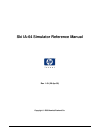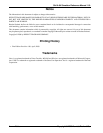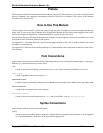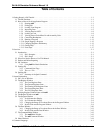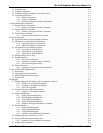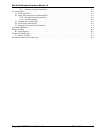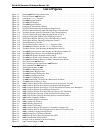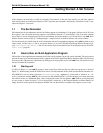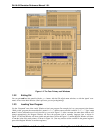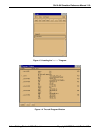
Copyright © 2000 Hewlett-Packard Co. Preface iii
Ski IA-64 Simulator Reference Manual 1.0L
Preface
This document is the Ski IA-64 Simulator Reference Manual. The goal of this document is to provide a description of the
features, commands, and simulation environment provided by the Ski IA-64 simulator. The version of the simulator
described here is Version 0.873l.
How to Use This Manual
The first chapter of this manual is a quick-start tutorial. Using only the first chapter, you can learn enough about Ski to do
useful work. If you are using Ski to simulate an IA-64 application program and are familiar with debuggers such as HP’s
xdb, the first chapter and Appendix A, “Command Reference” may be all you need to read.
The remaining chapters provide information about Ski in depth. Use these chapters to learn about commands not covered
in the tutorial and to learn more about how Ski operates.
Use Appendix A, “Command Reference” and the on-line help command to find a list of all Ski commands and a brief
description of each command.
Use Appendix D, “Simulator Status and Error Messages” to understand the causes and possible solutions for each of Ski’s
error messages.
Font Conventions
In this manual, fonts are used as described below. Depending on how you are viewing this document (paper, a web page, a
PDF file, etc.), some distinctions may not be visible.
italic
is used for optional text including operand fields such as count, and for the names of bitfields such as psr.be.
light italic
is used for graphical button names such as
Run
.
fixed-width bold
is used for literal text including commands such as dbndl, and for examples such as bski -icnt foo <bar >baz.
SMALL UPPERCASE
is used for processor instructions such as BREAK.
fixed-width regular
is used for directories and filenames such as hello, and for web URL’s such as http://www.hp.com.
Syntax Conventions
In this manual, symbols are used as described below.
[italic]
Square brackets surrounding optional argument(s) indicate that the argument(s) can be omitted, as in the Appendix
A, “Command Reference” description of the dj command: dj [address].



